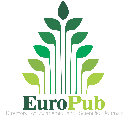Connectivity and digitalisation as strategies for the enhancement of abandoned resources with the potential for touristic usage. A case study of the province of Pontevedra
DOI:
https://doi.org/10.51302/marketing.2023.18851Keywords:
technology, touristic resources, cultural heritage, innovation, ICT, communication, coverageAbstract
Technology and digitalization have been transforming tourism, a fact that has become more and more evident in recent years. Faced with the challenges that arise in tourism, within the contemporary society, it is necessary to analyze the access to digital technologies and their impact on cultural heritage. Thus, this paper’s main objective is to analyse connectivity and to see how it can represent a first step for the touristic promotion of resources. Through a case study of Galicia, we aim to highlight the need for the inclusion of digital technology within the framework of the knowledge society and to show how these technologies can play a fundamental role in preserving and reactivating the cultural heritage. The findings show differences in coverage between the different Galician provinces as well as the possibility of rehabilitating cultural heritage with the help of heritage digitization, the creation of integrated offers and measurement, to develop a sustainable, responsible, and accessible tourism. More specifically, the creation of two tourist routes as integrated offers is proposed, after the rehabilitation of the heritage.
Downloads
References
Ariño, A. (2003). Sociología de la cultura. En S. Giner (Dir.), Teoría social moderna. Ariel.
Beltrán Jaramillo, M. (1999). Indicadores de gestión: herramientas para la competitividad. 3D Editores.
Blanco López, P., Vázquez Solís, V., Reyes Agüero, J. A. y Guzmán Chávez, M. G. (2015). Inventario de recursos turísticos como base para la planificación territorial en la zona altiplano de San Luis Potosí, México. Cuadernos de Turismo, 35, 17-42. https://doi.org/10.6018/turismo.35.221491
Bossio, S. N. (2009). Il piano urbanistico ambientale della città di Buenos Aireslegge quadro di protezione ambientale. Rivista Giuridica dell’Ambiente, 5, 821-826.
Bossio, S. N. (2010). El uso de indicadores para la medición del estado de conservación de los centros históricos. http://www.conceptourbanogb.com/
Bote, V. (1990). Planificación económica del turismo. Editorial Trillas.
Bullen, J., Scout, A. y Jones, E. (1998). Public perception of landscape in the Vale of Glamardon [Inédito]. Welsh Institute of Rural Studies, Universidad de Gales.
Burgess, H. y Burgess, G. (2003). What are intractable conflicts? http://www.beyondintractability.org/
Cachón Rodríguez, L. (1998). La formación y los nuevos yacimientos de empleo en España. Revista Española de Investigaciones Sociológicas, 77-78, 117-135.
Cairns, J. y Heckman, J. R. (1996). Restoration ecology: the state of an emerging field. Annal Review of Energy and the Environment, 21, 166-189.
Cairns, J. Jr. y Pratt, J. R. (1995). The relationships between ecosystem health and delivery of ecosystem services. En D. J. Rapport, C. Gaudet y P. Calow (Eds.), Evaluating and monitoring the heath of large-scale ecosystems (pp. 273-294). Springer-Verlag.
Cale, P. y Hobbs, R. J. (1991). Condition of roadside vegetation in relation to nutrient status. En D. A. Saunders y R. J. Hobbs, Nature conservation 2: the role of corridors (pp. 353-362). Surrey Beatty.
Cámara, C. J. y Morcate Labrada, F. A. (2014). Metodología para la identificación, clasificación y evaluación de los recursos territoriales turísticos del centro de ciudad de Fort-de-France. Arquitectura y Urbanismo, 35(1).
Campos Venuti, G. (1971). La Administración del Urbanismo. Gustavo Gili.
Corna Pellegrini, G. (1968). Studi e ricerche sulla regione turistica: i lidi ferraresi. Vita e Pensiero.
Costanza et al. (1997). The value of the world’s ecosystem services and natural capital. Nature, 387, 253-260.
Fundación Orange. (2016). La transformación digital en el sector turístico.
García Canclini, N. (1999). La globalización imaginada. Paidós.
Gómez Encinas, L. y Martínez Moure, O. (2020). Recursos turísticos sostenibles en la Ribeira Sacra tras la pandemia global. Methaodos. Revista de Ciencias Sociales, 8(2), 211-226. http://dx.doi.org/10.17502/mrcs.v8i2.380
Gómez Martín, B. y López Palomeque, F. (2002). Regionalización turística del mundo. Edicions de la Universitat de Barcelona.
González Bernáldez, F. (1981). Ecología y paisaje. Blume.
Guizán, L. (2021). Pontevedra en ruinas: el encanto oculto de los rincones abandonados de la provincia. El Español. https://www.elespanol.com/treintayseis/articulos/actualidad/pontevedra-en-ruinas-el-encanto-oculto-de-los-rincones-abandonados-de-la-provincia
Gutiérrez Brito, J. (Coord.). (2007). La investigación social del turismo. Perspectivas y aplicaciones. Paraninfo.
Jafari, J. (2007). Modelos del turismo. Los aspectos socioculturales. En D. Lagunas Arias (Coord.), Antropología y turismo: claves culturales y disciplinares. Plaza y Valdés.
Leno Cerro, F. (1992). La evaluación del potencial turístico en un proceso de planificación: el Canal de Castilla. Estudios Turísticos, 116, 49-85.
Martín Cabello, A. (2009). Perspectivas teóricas en torno a la sociología de la cultura. Dykinson.
Martínez Moure, O. (2012). Balnearios de Galicia: estudio antropológico y sociosanitario del Programa de Termalismo Social del Imserso. Ediciones del Orto.
Ministerio de Asuntos Económicos y Transformación Digital. (2022). Cobertura de banda ancha en España en el año 2021. España Digital 2026. https://avancedigital.mineco.gob.es/banda-ancha/cobertura/Documents/InformeCoberturaBandaAncha2021.pdf
Nogués Pedregal, A. M. (2009). Genealogía de la difícil relación entre antropología social y turismo. Pasos. Revista de Turismo y Patrimonio Cultural, 7(1), 43-56. https://doi.org/10.25145/j.pasos.2009.07.004
OMT (Organización Mundial de Turismo). (1978). Introducción al turismo.
ONU (Organización de las Naciones Unidas). (1999). Integrated and coordinated implementation and follow-up of major United Nations conferences and summits. A critical review of the development of indicators in the context of conference follow-up. Report of the Secretary-General, anexo 3. http://www.un.org/documents/ecosoc/docs/1999/e1999-11
Ortega Valcárcel, J. (1998). El patrimonio territorial: El territorio como recurso cultural y económico. Revista Ciudades, 4, 33-48.
Ortega Valcárcel, J. (2004). Áreas de montaña: de la supervivencia a la integración. Boletín de la Asociación de Geógrafos Españoles, 38, 5-28.
Torres Bernier, E. (2006). Estructura de mercados turísticos. UOC.
Zoido Naranjo, F. (2003). Educación, formación y sensibilización sobre el paisaje. Objetivos y prioridades en España.
Zorzi, R. (Ed.). (1999). Il paesaggio. Dalla percezione alla descrizione. Fondazione Giorgio Cini.
Downloads
Published
How to Cite
Issue
Section
License
Copyright (c) 2023 Raquel García Revilla, Olga Martínez Moure, Carmen Sarah Einsle

This work is licensed under a Creative Commons Attribution-NonCommercial-NoDerivatives 4.0 International License.





















